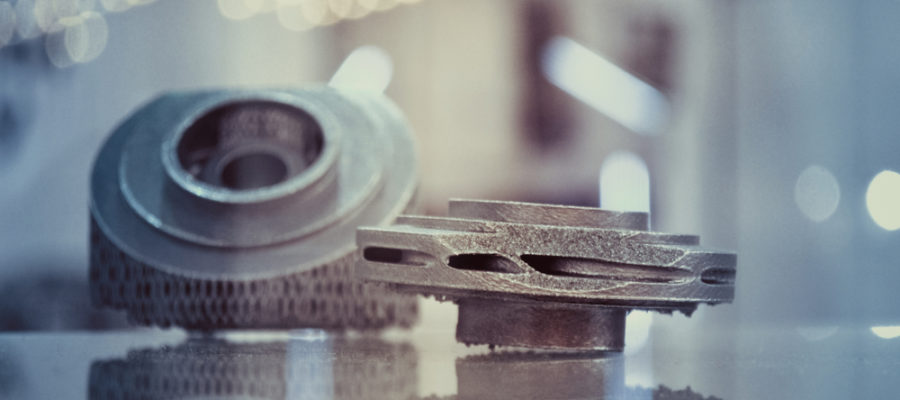Like with all additive manufacturing, or 3D printing processes, the first step to understanding how selective laser sintering works (SLS) is to unpack the name. In this case, we’re going to start with the last word in selective laser sintering!
- Sintering – If you’ve ever picked up some loose snow and compacted it into a solid snowball, you have sintered! Wikipedia describes sintering this way: Sintering … is the process of compacting and forming a solid mass of material by heat or pressure without melting it to the point of liquefaction. In the case of 3D printers that use SLS technology, thermoplastic powder is sintered in layers to form production parts and prototypes.
- Laser – In SLS machines, a high-powered laser heats a certain area of the thermoplastic powder that rests in a thin layer on a powder bed. The powdered material that’s heated by the laser fuses together into a solid.
- Selective – Selective refers to the fact that the laser “selectively” fuses some of the powder on a powder bed according to a CAD pattern.
How SLS Printing Technology Works
Like other 3D systems for additive manufacturing, the SLS printing process starts with a 3D CAD file, which is “sliced” into cross sections for printing.
- For each cross-section layer to be printed, an SLS machine disperses a thin layer of powder on a bed inside the build chamber of the printer.
- The powder is preheated by the printer to just below its melting point, which makes it easier for the laser to sinter the powder.
- The laser heats the powder precisely according to the cross-section of the 3D CAD model.
- The build platform then lowers inside the build chamber, usually between 50 to 200 microns, according to the specifications of the CAD file. A new layer of powder is spread across the powder bed and the laser sinters the next cross-section of the part or prototype.
- The SLS post-process begins when the part is complete. It is taken out of the build chamber, separated from the loose powder and any remaining powder is removed, usually manually, using compressed air or a media blaster.
To learn more about 3D printing technology, check out our article “How 3D Printing is Transforming Manufacturing”.
